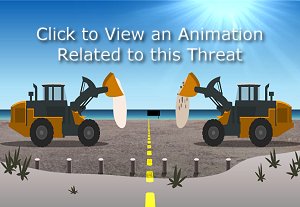Beach Erosion

The Problem: One way to address beach erosion is through beach nourishment. Nourishment consists of pumping, trucking or otherwise depositing sand on a beach to replace what has been lost to erosion. While beach nourishment is often preferable to armoring, it can negatively impact sea turtles if the sand is too compacted for turtles to nest in or if the sand imported is drastically different from native beach sediments, thereby potentially affecting nest-site selection, digging behavior, incubation temperature and the moisture content of nests. If renourishment is allowed to proceed during nesting season, nests can also be buried far beneath the surface or run over by heavy machinery.
 Dredging can also cause direct threats to sea turtles and their nearshore marine habitats. Hopper dredges that suck up the sand from offshore have been directly responsible for the incidental capture and death of many sea turtles in the US. Also if the sand is too fine or silty it can wash back out and cover
Dredging can also cause direct threats to sea turtles and their nearshore marine habitats. Hopper dredges that suck up the sand from offshore have been directly responsible for the incidental capture and death of many sea turtles in the US. Also if the sand is too fine or silty it can wash back out and cover
However, when done correctly and in accordance with all laws to protect sea turtles and other natural resources, beach nourishment can add nesting habitat where erosion had washed it away. It is worth noting that a very wide beach resulting from nourishment is generally only beneficial to sea turtles in those areas where limited or degraded nesting habitat had previously existed.
Species Affected: All species of sea turtles are affected by beach nourishment and dredging
The Solution:
Current regulatory policies must change if there is any hope of saving natural beaches. These changes cannot take place
- Don't build structures right on the beaches;
- Promote coastal construction set-back policies;
- Promote enforcement of coastal construction set-back policies;
- Help re-plant native vegetation on dunes to refortify the beach.
Case Study:
A multi-year study of a
Related links:
Tello - Sharpe

Map
Biography
Cause
Adopt-A-Turtle





